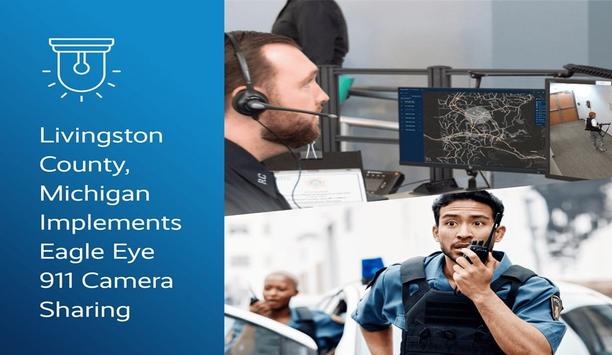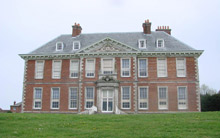 |
| National Trust adopted cost-effective sytems that use Dallmeier DLS 6 digital video recorders |
National Trust has an enormous security advantage over most organisations. Every room is occupied during opening hours by one of thousands of volunteers who keep watch to prevent pilfering or damage. Therefore there is no need to put a CCTV camera into every room, and so National Trust has been able to adopt cost-effective systems that use Dallmeier DLS 6 digital video recorders to complement - rather than duplicate - its volunteers' efforts.
Relatively few cameras are required in each property in order to achieve National Trust's aims of evidence-quality recordings of every visitor, coupled with a clearly-visible deterrent. Many of the cameras are overtly positioned, to ensure that any would-be thieves will think again and decide against coming back later to break in.
The approach's success can be seen in properties such as Uppark in West Sussex, where there have been no incidents since the installation of CCTV two years ago following a break-in.
National Trust's head of security Peter Gough and security adviser Dominic Pearson visit the 250 properties around the country on a regular basis. The standalone Dallmeier-based CCTV systems continue be rolled out, with new systems requested every month and increasing interest in using the technology for other purposes, such as showing areas that are not open to the public.
All-round security
"The primary threats that CCTV helps us tackle are theft during open hours and burglary when the property is closed," says Pearson. The CCTV systems are a standard specification based around the Dallmeier DLS 6 recorders. National Trust also uses Dallmeier Cam_inPIX® cameras, which are designed to cope with extreme lighting conditions and are ideal for monitoring people entering the building from a brightly-lit exterior.
"Volunteer room stewards remain our first line of defence," he stresses. "We are not trying to replace them with cameras." This use of volunteers sets the Trust apart. "The reason why we're different to other organisations is because they have to pay for their human security presence - thankfully ours comes free." A pool of some 40,000 volunteers is in place around the country.
National Trust's properties are not heavily targeted by criminals, but security is nevertheless taken very seriously. "We work from a very low base of crime," he says. The security systems that are installed are initially intended as a deterrent to ensure that National Trust is not seen as a potentially vulnerable target. "The second aim is to provide an evidential-quality image of everybody who visits the property on the basis that a professional criminal would probably first pay a reconnaissance visit during opening hours."
Not every property has yet been fitted with CCTV. "It's a threat-based decision. We initially look to install at the high-risk properties, or ones with high-value collections," he explains. He and Gough cover the country on a five-year cycle of formal surveys, with more frequent interim visits to suit individual needs. Anti-social behaviour causes problems at some properties on the urban fringe. An incident such as a burglary can also be the impetus for installation. This was the case at Uppark after a night-time break-in resulted in several valuable items being stolen.
Uppark - a house with history
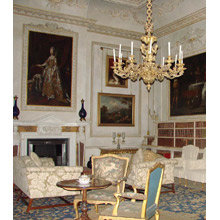 |
| National Trust's properties are not heavily targeted by criminals, but security is nevertheless taken very seriously |
"Fortunately, we haven't had any incidents since the system has been installed - or even anything that we have been concerned enough about to save a permanent record," says Uppark house manager Sarah Stevens. "The system works very well."
Uppark is a fine late 17th-century red brick house in an impressive elevated parkland setting on the South Downs. It contains a renowned collection of furniture and pictures - many purchased during Grand Tours of mainland Europe in the mid-18th century. The house was severely damaged by fire in 1989 and its repair was one of the most complicated ever undertaken by the National Trust.
The Dallmeier DLS 6 starts recording whenever motion is detected in a camera's field of view. The system remains in constant operation day and night, although the main emphasis is to capture an image of everyone visiting during opening hours.
The camera feed is not formally monitored, but is visible to members of staff from their desks. "When we are open to visitors, the standard practice is to turn the monitor on every morning so that it runs throughout the day," says Stevens.
In the absence of incidents, staff members take care to ensure that they remain familiar with the procedures for searching the images and saving sections to disc. These test discs are then destroyed, to avoid privacy issues.
A key concern was to ensure that the volunteers were comfortable with the CCTV system. "We couldn't open a National Trust house without our volunteers," says Stevens. "I was very careful to ensure that they knew that we were not watching them." She emphasised that the system was there to help in the event of an incident. "We explained that we would need their help and that they would be able to watch the recordings with us. They feel quite comfortable with it now," she says.
"We can expand the system over time, once they have embraced the technology and seen what it can do for them" |
After an incident, a volunteer sometimes recalls seeing something slightly odd - such as someone in a hurry to complete their tour - that wasn't noteworthy enough to merit formal reporting. It can be difficult to come up with an accurate description of someone glimpsed only fleetingly, but volunteers can often pick the person out from a recording. "We emphasise to them that it is a tool for all of us to use," she says.
"Our use of CCTV is quite simple at the moment," says Pearson. Properties tend to start with a small arrangement with a limited number of cameras. "We can expand the system over time, once they have embraced the technology and seen what it can do for them." This was one of the reasons for choosing Dallmeier recorders, as additional camera ports can be activated as required, which is far more cost-effective than paying for capacity that might never be needed. The DLS 6 comes with six ports activated and this can be increased to 12 or 18.
Making the decision
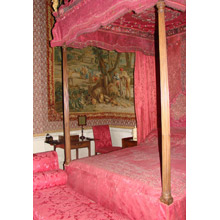 |
| Few cameras are required in each property in order to achieve National Trust's aims of quality recordings |
National Trust elected to adopt a nationwide specification for CCTV, rather than coming up with individual solutions suggested by local installers. The choice of Dallmeier DVRs came after considering a number of recording systems. "It was a quality-driven choice," says Pearson.
Images need to be of the highest quality, and the provision of large storage capacity enables recordings to be made at high frame rates. The requirement for recordings that could be used in evidence meant that it was important to pick a system meeting Kalagate security standards. Other features that are particularly appreciated include the ‘SmartFinder' search function which is ideal for identifying all movement in a particular part of the replayed image. National Trust also appreciates the ease with which the recorders can be updated to run the latest software. These updates are regularly supplied by Dallmeier at no additional cost.
Visiting Dallmeier's UK headquarters in Pucklechurch confirmed the decision. "Everyone was extremely helpful and welcoming. It was clear that Dallmeier is in the business for the long term and is there to support the product and customer," says Pearson.
He was also particularly impressed by Dallmeier's provision of training. "We now have it written in our specification that installers must send their engineers on the training prior to the installation," he says.
Going beyond security
"We probably only use a fraction of the functions of the Dallmeier recorders but we are aware of everything that CCTV can do for us," he adds. "Now that we've got the CCTV system, we can think about how else to use it."
Uses already being discussed at Uppark include the facility to allow visitors to see areas that they cannot visit. Camera images could be viewed on a monitor within the individual property or the images could even be uploaded to the internet.
"Everyone was extremely helpful and welcoming. It was clear that Dallmeier is in the business for the long term and is there to support the product and customer" |
Where possible, conservation work is carried out in plain sight of visitors. "But the nature of the work means that some of it has to be behind closed doors," says Sarah Stevens. "If we undertook a major conservation project, we would consider connecting a camera to the system to show our visitors what we were doing and how we were doing it." The technology could also be used to create timelapse recordings of work in progress.
"I'm aware of three Trust properties that are already using CCTV for interpretation," says Pearson. "One in the north of England is using it to show video images of building works that are happening at a high level. I certainly believe this is the way ahead for us."
Another application could be in areas where wheelchair access is impossible. CCTV cameras could help fulfil the requirements of the Disability Discrimination Act, he suggests.
Looking ahead
National Trust's security office does not monitor the recordings, and none of the systems are networked. "There is no real reason for us to have access," says Pearson, though this is something that is kept under review. "There could be possible benefits from remote connectivity in the event of alarm activations," suggests Piggott. "If there was a requirement for assistance, someone elsewhere could monitor what was happening." In particular, remotely-monitored CCTV is being considered for areas experiencing problems of anti-social behaviour in their grounds.
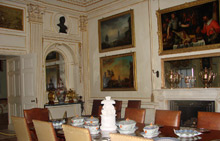 |
| The camera feed is not formally monitored, but is visible to members of staff from their desks |
National Trust has been trialling remote access and the Dallmeier Cam_inPIX® IP camera, in conjunction with using PView and SmartGUI software to provide a simple graphical user interface for accessing images from a remote location across a network. It is also recognised that Dallmeier has a range of video analytic products designed to detect the removal/placing of objects within a scene. This technology can also provide people counting and intelligent motion detection and is something that National Trust is considering for use in some of its properties.
Installation of CCTV within National Trust's listed buildings is challenging and overt cameras can compromise the aesthetics of the fine interiors. Routing the cabling can cause particular problems and current trials also include the latest technologies for video signal transmission using existing power cabling.






